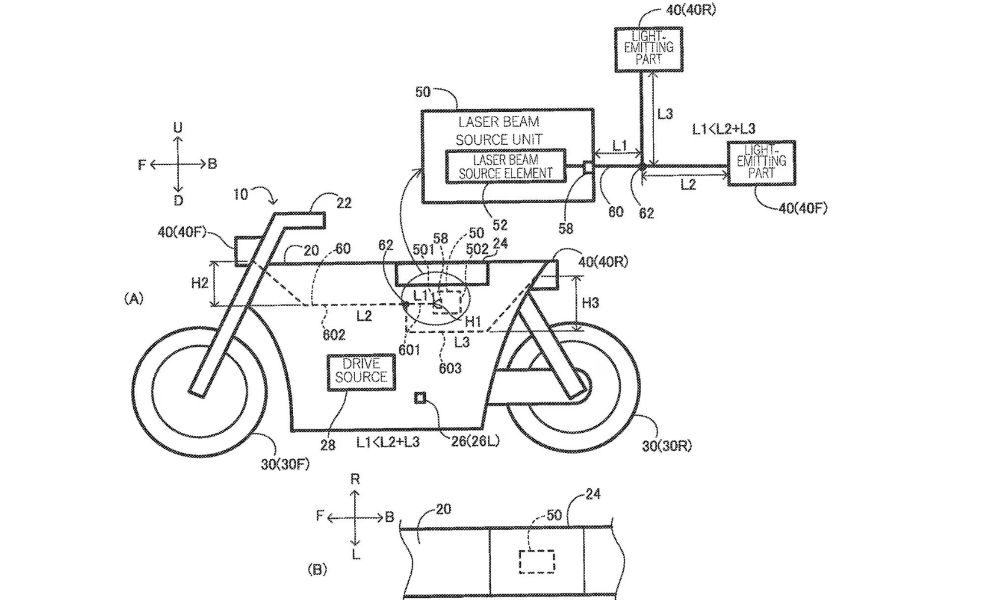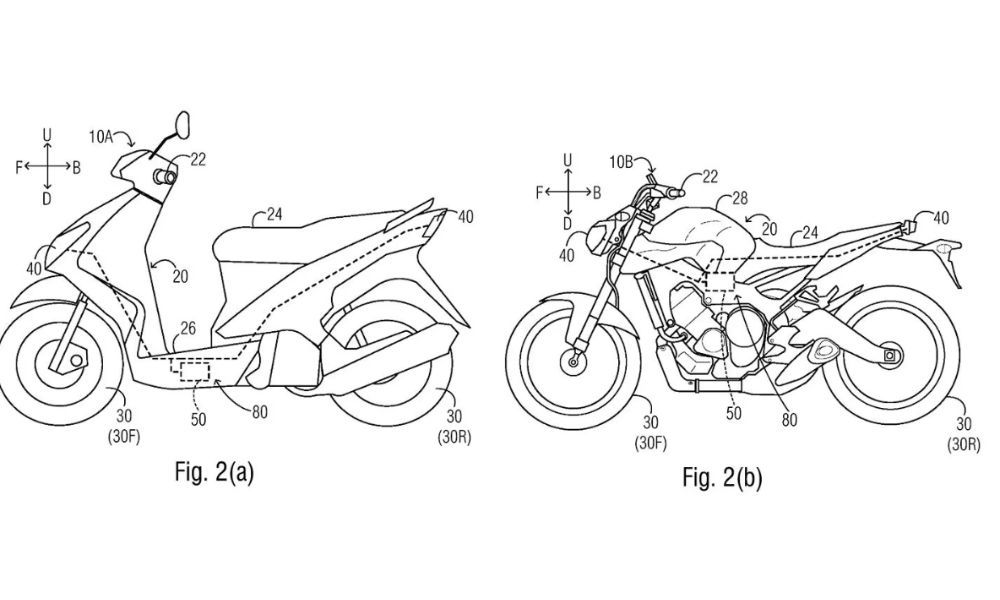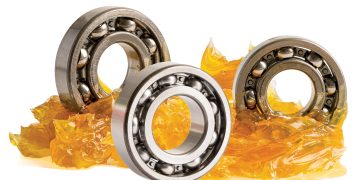Yamaha is working on a cost-effective and streamlined approach to incorporate laser technology for motorcycle lighting. Unlike traditional laser headlights, which have been limited in motorcycles due to high costs, Yamaha’s innovation involves a single centrally located laser. This laser is strategically positioned beneath the motorcycle’s seat or within the floor section of a scooter. Fibre optic cables are then utilised to distribute the emitted light to various components, including the headlight, taillight, licence-plate lamp, turn signals, and instrument panel lights.
The proposed design not only addresses concerns related to the expense and complexity of conventional laser headlights but also contributes to a more compact and lightweight bike design. Yamaha’s patent application aims to make laser lighting more accessible in the motorcycle industry by overcoming the cost barriers associated with this technology.
Yamaha’s laser technology takes inspiration from the combination of lasers and LEDs in cars, leveraging the brightness, focus, and energy efficiency of lasers. The lasers emit blue light, which is then reflected through mirrors and a layer of yellow phosphor to produce a bright white light suitable for road use. This approach aligns with the trend of mass centralization and protection of the expensive laser component from potential damage.
While BMW pioneered laser-headlight technology for cars in 2014 and attempted its application in motorcycles, cost constraints posed challenges for production. Yamaha’s innovative single laser technology is part of a broader industry trend and shares similarities with Honda’s patent application. While Honda explored a two-laser approach for high and low beams, Yamaha’s solution with a single laser aims to reduce costs, size, and weight.
Despite Yamaha’s efforts to bring laser lights closer to reality for motorcycles, the widespread adoption may still be influenced by the rapid advancements in cost-effective LED technology within the motorcycle industry.



























































